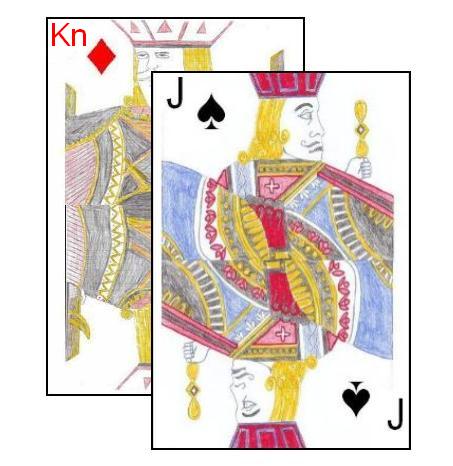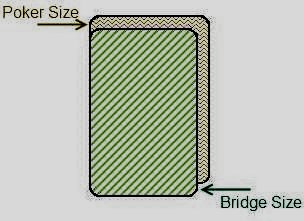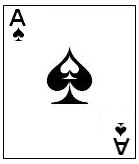Why is the Jack called a Jack?

While it might be fairly obvious what a King and a Queen represent and what these card denominations were named after, it is not so obvious what the Jack represents. The card we now call a Jack (which normally falls between the 10 and Queen in rank) was, in the original English decks of cards called a Knave. The Knave was the name for a male servant in the royal court. When the card ranks or corresponding letters were added to the upper left and lower right corners of the cards to make them easier to see when held in the hand, "K" was used for the King and "Kn" for the Knave. Due to the similarity in letters these cards could be easily confused, thus another representation was needed for one of these cards. In the game of All Fours, popular at that time, a special point award was called Jack for the Knave of the trump suit. Through time, the name began being also used for the card itself, and eventually the name for any Knave. This name stuck and thus the original Knave came to be known as the Jack, as represented in most packs of playing cards today.
What is the difference between Poker size and Bridge size playing cards?
 The difference between Bridge size and Poker size playing cards is in the width of the cards. Bridge size cards are somewhat thinner than Poker size playing cards. Poker size cards are 2.5 inches (6.2 mm) in width while Bridge size cards are 2.25 inches (57 mm) in width. The original reason for this was that for games with fewer cards in the hand (such as Poker which normally uses 5 cards), the larger cards can be held in such a way to easily see all the cards. However, in games such as Bridge (which uses 13 cards in the hand), a smaller card is more convenient for holding more cards in the hand and being able to see all the cards currently held. Poker size cards are sometimes referred to as "wide" size and Bridge size cards are sometimes referred to as "narrow" size. The actual makeup of the pack for both types is exactly the same with identical ranks and suits represented, the difference in the width of the cards being the only discrepancy.
The difference between Bridge size and Poker size playing cards is in the width of the cards. Bridge size cards are somewhat thinner than Poker size playing cards. Poker size cards are 2.5 inches (6.2 mm) in width while Bridge size cards are 2.25 inches (57 mm) in width. The original reason for this was that for games with fewer cards in the hand (such as Poker which normally uses 5 cards), the larger cards can be held in such a way to easily see all the cards. However, in games such as Bridge (which uses 13 cards in the hand), a smaller card is more convenient for holding more cards in the hand and being able to see all the cards currently held. Poker size cards are sometimes referred to as "wide" size and Bridge size cards are sometimes referred to as "narrow" size. The actual makeup of the pack for both types is exactly the same with identical ranks and suits represented, the difference in the width of the cards being the only discrepancy.
The base manufacture of a playing card is usually multiple layers of paper glued and pressed tightly together. Oftentimes, a full clear plastic coating is applied to the entire card. This is generally done in order to increase the durability of a deck of cards. In addition, plastic coated playing cards can be gently washed to clean them if they become soiled. Plastic coated cards are usually slightly thicker than a deck of paper non-coated deck. There are also decks available that are made completely of plastic with no multi-ply paper interior.
What is the purpose of cutting a deck of cards?
Cutting a deck of shuffled cards is generally performed in order to help prevent cheating. While cutting the cards does not change the overall ordering of a deck, it does break the specific position of each card in the deck. Many games require as part of the players that a cut be performed, and it is recommended that a cut be done just prior to dealing.
What do the Court Cards represent?
While it seems that in a modern deck of cards the court cards do not represent anyone in particular, at one time they were often designed to represent specific Kings and Queens throughout history or other noteworthy individuals, particularly in early English and French playing card decks. Currently the King and Queen usually represent just a generic person of the appropriate royalty, while the Jack, at one time represented a Knave, or male servant in the court of the King and Queen. In many German games, the Jack was also said to represent a farmer or the common man.
How many cards are in a standard playing card deck?
Most standard decks sold today contain 52 cards, consisting of one card of each suit of the following denominations (Ace, King, Queen, Jack, 10, 9, 8, 7, 6, 5, 4, 3, 2. The four suits are called Spades, Hearts, Diamonds and Clubs.
Why is the Ace the highest ranked card in many card games?
It is thought that the Ace represents the general commoner, while the court cards represent royalty. Many games had the Ace (representing the common man) outrank every other card (particularly the court cards) in order to represent the common people overthrowing the power holding royalty.
How many times should the deck be shuffled between deals?
Although, the specific number of shuffles that should be performed on a deck of cards is determined by a number of factors (such as the shuffling method used, the skill of the individual performing the shuffle and many other such factors), most experts agree that approximately four shuffles is the minimum that should be used. This ensures a reasonable degree of randomness is imparted to the deck. This analysis is based on use of the standard riffle shuffle being used, although most shuffling techniques give a similar level of randomness to the deck. For a shuffle ensuring almost complete randomness, ideally 7 or 8 shuffles should be performed. Beyond this number of shuffles the law of diminishing returns usually results, with little additional uncertainly of the deck gained with additional shuffles beyond this number.
What is the usual arrangement of a new, just opened deck of cards?
Almost all new decks of cards, when first opened are arranged in a very specific manner. Starting from the bottom face up card, the first card would be the Ace of Spades building up to the King of Spades. The sequence repeats for the entire suit of Clubs, then Hearts and lastly the suit of Diamonds. Thus, the Ace of Spades, bearing the logo or trademark for the brand of the deck of cards would be the first card face normally seen in the new deck when removed from the package.
 Why does the Ace of Spades appear different than the other cards?
Why does the Ace of Spades appear different than the other cards?
In almost every deck of cards the Ace of Spades is usually significantly different in appearance than the other cards. The spade design on the card is usually larger than that on other cards and often is very ornate. The reason this is so goes back in history. In the 17th century, the English royalty required a tax to be paid on every deck of playing cards sold. In order to show that such a tax had been paid, a special stamp was supposed to be put somewhere on the deck. The card printers decided to put this stamp, indicating the tax had been paid, on the Ace of Spades which for most games was the highest ranked card in the deck. Although through time, the stamp was no longer required to be placed on the deck, the manufacturers continued to print the Ace of Spades with a more ornate design, usually showing the manufacturers special design on the large spade on the card.
How many different arrangements are possible when shuffling a standard deck of cards?
When the standard 52 card deck of cards is shuffled, the number of potential specific orderings of such a deck is an astounding 80,658,175,170,943,878,571,660,636,856,403,766,975,289,505,440,883,277,824,000,000,000,000. This can be more compactly listed as approximately 8*10^67 or 52! (52 factorial). This number is so large that it has been theorized that no two random shuffling of a deck of cards have ever produced the exact same arrangement and never will.
Which direction should I deal out the cards?
The answer to this question primarily depends on the geographical location where you are dealing. In North America, most of Northern Europe, Australia and Russia the cards are usually dealt in a clockwise direction. In most of Asia, South America and Southern Europe the cards are usually dealt in a counter-clockwise direction. The direction of the play also usually follows this same pattern, depending on where the game is played. Certain games may also dictate a specific direction for dealing and play of the hand either through rules particular to that game or by custom.
 When and Where did playing cards and card games first originate?
When and Where did playing cards and card games first originate?
It is widely believed by most experts and historians that playing cards and games played with them first originated in China in approximately the 9th century B.C. From China they then spread to Persia, India and eventually around the entire world. It is highly probable, and a shared belief among most experts, that playing cards then arrived in Europe in the 1350's.
What is the most widely played card game in the World?
There is significant debate on this particular question, as there are a large number of widely popular card games played today. The popularity of many games has waned and ebbed during the years, but, according to sheer number of players, Bridge currently seems to be the crowning King of card games but is closely followed by a number of others.
Who are the Cats at Cards? The Cats are a group of cool cats who greatly enjoy an exciting and fun game of cards. The cats enjoy playing a wide variety of games and are always adding new games and variations to the expanding collection found at their website. Check back often to see what is new.
Copyright © 2015 CatsAtCards.com. All rights reserved.